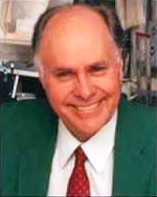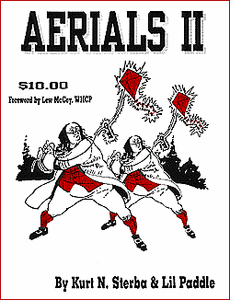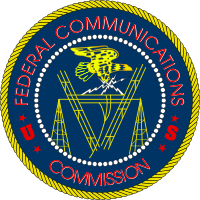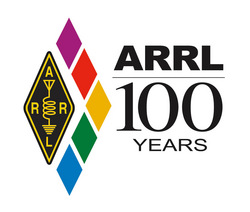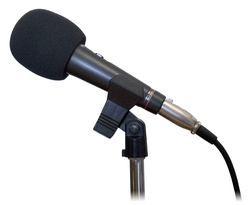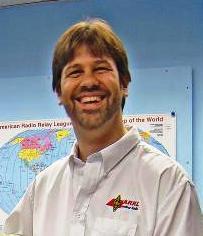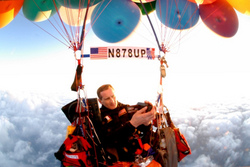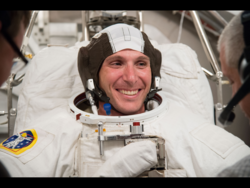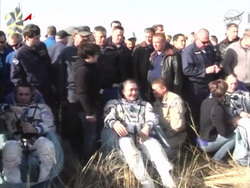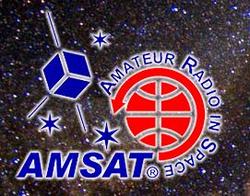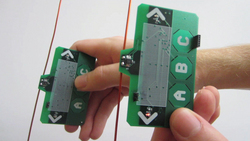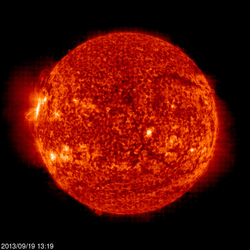 September 19, 2013 John E. Ross, KD8IDJ, Editor
| |||||||||||||||||||
Public Service: Colorado ARES Teams Transition to Flood Damage Assessment
As the disaster response changes from rescue to recovery mode, Amateur Radio Emergency Service (ARES) volunteers in flood-stricken communities in Colorado shifted to damage assessment duty by mid-week. Boulder County ARES (BCARES) planned to shoot video of the devastation as teams move into the field -- a job Boulder County ARES Assistant Emergency Coordinator George Weber, KAØBSA, said was "something new" for his team. Damage assessment follows on the heels of an extended activation to help rescue, evacuate, and shelter flood victims. "Boy, have we been busy!" Weber told BCARES members in announcing the callout. "This is even more than anyone ever planned for. I heard the term '500-year flood' being used." Seven BCARES damage assessment volunteers were scheduled to ride along in county vehicles, equipped with mobile ham radio gear set up to work through several area repeaters. Plans called for using APRS as well. Weber expected the activation to last "a few days."
Colorado ARES volunteers have been deployed in and around flood-stricken counties of Colorado, providing critical communication for Red Cross shelters and state and local emergency operation centers. As of mid-week, the Red Cross had consolidated some shelters and no longer required Amateur Radio assistance. ARRL Colorado Section Manager Jack Ciaccia, WMØG, said that with power cut off to affected communities and many cell telephone towers down, ham radio has been supporting medical and health-and-welfare traffic between evacuation centers and the EOCs, In some cases, ham radio provided the only communication link for isolated communities. On September 16, Colorado Section Emergency Coordinator Robert Wareham, NØESQ, represented ARES as Colorado Governor John Hickenlooper (D), FEMA Administrator Craig Fugate, KK4INZ, US Senators Mark Udall (D-CO) and Michael Bennett (D-CO), US Representative Cory Gardner (R-4), Mike Coffman (R-6), and Ed Perlmutter (D-7) visited the state emergency operations center. Wareham said that he and Emit Hurdelbrink, WØUAW -- a regional emergency coordinator -- spoke briefly with Hickenlooper "who thanked us for our service," Wareham said. He added that Fugate also spoke with him about the ARES post-flood activities. Wareham reported in a post to the ARRL Colorado Section Facebook page that ARES volunteers have been working shifts of 12 hours or longer since the flooding started. A Mountain Emergency Radio Network (MERN) repeater in Allenspark was instrumental in a medical rescue that involved a recently licensed ham. A ham in Nebraska, via an EchoLink repeater in Colorado, advised Robert McDonald, KDØSCC, of Allenspark, who drove 3 miles to alert fire dispatch. Estes Park ARES had set up in the fire station's emergency communications site. Ciaccia said ham radio received kudos from the Allenspark Fire Chief, who attributed lives saved directly to ARES efforts. "The ability to get fast, accurate info to their residents as it was being disseminated was critical to their rescue and evacuation efforts," Ciaccia said.
The flash flooding in Colorado has claimed at least eight lives, hundreds remain unaccounted for, untold numbers of homes and highways have been destroyed, and many residents still await evacuation, according to media accounts. "Hams continue to staff evacuation shelters throughout the region and emergency operations centers (EOCs) for the state and multiple counties and municipalities," Wareham said over the weekend. The National Guard has been mobilized to help with evacuations and rescue operations. Wareham said that hams not directly involved in the disaster response served as storm spotters for the National Weather Service, providing reports on rainfall, creek and river levels. Public Service: Hurricane Watch Net Activates for Hurricane Ingrid
Hurricane Watch Net (HWN) manager Bobby Graves, KB5HAV, reports the net activated Sunday, September 15, at 1500 UTC on 14.325 MHz in response to the approach of Hurricane Ingrid -- only the second hurricane of the 2013 season. Hurricane and tropical storm warnings had been issued along parts of Mexico's Gulf Coast for the Category 1 storm. After making landfall, Ingrid combined with another tropical storm coming in from the west. The result was significant rainfall over parts of Mexico that caused extensive flooding and mudslides, washing away homes in eastern Mexico. The HWN had been hoping to receive condition reports from stations in the affected areas, but Graves said none were forthcoming. "Our net activation went well even though we didn't have the first station from Mexico check in with us on the air," Graves told ARRL. "I did get an e-mail from a former member who lives near Veracruz... to let me know that all our net controllers were being heard very well in his area." Graves said that during the 6 hour net, net controllers read advisories in both English and Spanish. It was not all for naught, however. "Since things were slow, this gave us the opportunity to have some on-air training and test out some new systems and operational plans," Graves said. "Although we hope there are no more land-falling storms this season, HWN is well prepared for what may come." Silent Keys: Ham Radio Publications Pioneer, Visionary, Iconoclast Wayne Green, W2NSD, SK
Wayne S. Green II, W2NSD ("Never Say Die"), of Hancock, New Hampshire, died September 13. He was 91. A well-known and often outspoken figure during what some consider Amateur Radio's golden years in the 1950s and 1960s, Green helmed CQ Magazine for 5 years before becoming the self-proclaimed "El Supremo and Founder" in 1960 of 73 magazine, which he published until 2003. "The purpose of [73] at that time was to get more hams building equipment," Green recounted in a radio interview several years ago. A hallmark of 73 was Green's iconic, rambling and wide-ranging "Never Say Die" editorials, in which he rarely missed an opportunity to tweak the ARRL and his magazine competitors for their perceived shortcomings. ARRL CEO David Sumner, K1ZZ, said Green maintained his membership in the ARRL despite being a persistent critic. "Wayne will be remembered in many different ways by many different people, but he will be long remembered," Sumner added. "In the early days of packet radio he gave me some good advice as to how the ARRL should promote the new technology: 'Talk about it as if everybody's doing it, and eventually they will be.'" Indeed, Green often was ahead of the curve in promoting such technologies as single-sideband phone, solid-state, FM, and the marriage of computers and ham radio, and he went on to found and publish Byte and other computer-oriented publications. "I live mostly in the future," Green was quoted as saying. ARRL Publications Manager and QST Editor Steve Ford, WB8IMY, got his start writing for Green. "Wayne published my first article way back in 1975," he said. "I still have a photocopy of the check he sent." Green maintained a larger-than-life presence, even in the years after he faded from the Amateur Radio spotlight, and he never did really retire. "Hey old buddy, I will miss you," radio talk show host Art Bell, W6OBB, posted to Wayne Green's blog. "NEVER SAY DIE is a phrase that will be with me till it's my time." Green was an occasional guest on Bell's "Coast to Coast AM" overnight talk program. There hardly was an issue that Green would not confront, and he expounded a variety of unconventional science, health, and medical theories -- from cold fusion and the moon landing to AIDS and cancer cures. He continued to write and speak frequently on these topics and others, as well as on public policy, even at hamfests where he was a guest. The "final" in his blog sums up Green's overarching philosophy. "Wayne Green passed away September 13, 2013 in a peaceful, painless transition from this life on Earth. An eternal optimist, and one who loved to share his never-ending zest for life, he was a friend to many and will be missed greatly. Wayne was not afraid of dying and was very much ready to embark on his next great adventure to the afterlife." Silent Keys: Palomar Engineers President Jack Althouse, K6NY, SK -- Was "Kurt N. Sterba"
Palomar Engineers President John E. "Jack" Althouse, K6NY, of San Diego, California, died September 15 after suffering a massive stroke. He was 90. With his death, his alter ego "Kurt N. Sterba," who penned the "Aerials" columns from 1999 until 2012 and authored books on antennas for WorldRadio, also passes into Amateur Radio history. Althouse graduated from the University of Nebraska with a BS in electrical engineering. He held an MS in electrical engineering from the University of Iowa. Last summer Althouse announced that he had disposed of most of his product line, since he would be "semi-retired" and entering an independent living facility. He remained active on the air until earlier this year. Palomar Engineers, the Escondido company he operated, may become a thing of the past as well. A message on the company's website says Palomar Engineers is "temporarily closed" and "not taking orders at this time." A regular QST advertiser, Palomar marketed balun kits, RFI kits, toroids and ferrite cores and beads. It once offered antennas and other accessories. Althouse's family has not yet decided the future of Palomar Engineers but directed questions to an e-mail address. The family said outstanding orders either would be canceled and any funds refunded or fulfilled if the item could be located. Regulatory: FCC Dismisses "Encryption" Petition
The FCC has dismissed a Petition for Rulemaking (RM-11699) from a Massachusetts ham, that sought to amend the Part 97 Amateur Service rules to permit the encryption of certain amateur communications during emergency operations or related training exercises. The FCC put the petition filed by Don Rolph, AB1PH, of East Walpole on public notice in June. Rolph requested an additional exception to §97.113, which currently prohibits "messages encoded for the purpose of obscuring their meaning," but the FCC said in a September 18 Order that it's not persuaded his petition provides sufficient reasons to support the change. "[W]e conclude that the record does not support Mr Rolph's assertion that the prohibition on encrypted amateur communications is impairing the ability of the Amateur Radio community to provide effective support to public safety agencies during emergencies," the FCC said. The FCC said it received more than 300 comments on Rolph's petition, and those opposing the change outnumbered supporters two to one. In denying the petition, the FCC concluded, "Thus, while the proposal could advance one purpose of the Amateur Radio Service -- value to the public as a voluntary noncommercial communication service, particularly with respect to providing emergency communications -- it would undermine other characteristics and purposes of the service." Read more. Your League: ARRL Centennial Convention Website Now Live!
The ARRL Centennial Convention website <www.arrl2014.org/> is now live! Online registration is coming soon. The League will celebrate 100 years of "Advancing the Art and Science of Radio" next year from Thursday, July 17, to Saturday, July 19, 2014. Most Centennial Convention activities will take place at the Connecticut Convention Center in Hartford, where thousands of League members and friends are anticipated. Hartford was ARRL's birthplace.
Online convention registration will become available in January. A two-day ticket is $25 in advance, $30 on-site (free of charge for attendees age 21 and younger). It includes Friday and Saturday Exhibit Hall admission and access to all forums and general sessions. Additional events include free bus trips all three days to ARRL Headquarters and W1AW. Stay tuned for the ARRL National Centennial Convention program and registration, starting January 2014. We look forward to seeing you join us in celebrating 100 years! Your League: ARRL Audio News Wants You!
ARRL Audio News returns to the League website Friday, September 20, and producer and newscaster Sean Kutzko, KX9X, has invited ARRL members to become a part of the weekly news report by submitting "station identifications" in MP3 format. "They need to follow this script exactly: 'I'm ARRL Member <your name and call sign> of <your location>, and you're listening to ARRL Audio News.'" Audio should be as clear and distinct as possible. "IDs that are clear and well-recorded will be considered for use in ARRL Audio News," he adds.
Kutzko, who is ARRL Public and Media Relations Manager, holds a bachelor's degree in communications from the University of Illinois at Springfield, where he focused on mass media. He worked at several National Public Radio affiliates in the Midwest for nearly 15 years as an on-air host, production manager and operations manager. Kutzko has been a radio amateur since age 14 and remains active as an HF and VHF contester and DXer. Most recently he's embraced backpack QRP operating while hiking and camping. He's been on the ARRL Headquarters staff since October 2007, serving initially as Contest Branch manager. Kutzko says the webcast will be available by 5 PM ET every Friday. People: Ham-Pilot Safe after Transatlantic Cluster Balloon Attempt Fails Friday the 13th came early for cluster balloonist and radio amateur Jonathan Trappe, KJ4GQV, of Raleigh, North Carolina. Trappe's attempt to cross the Atlantic in a cluster balloon ended when he "Landed safe, at an alternate location," as he put it in a Facebook post. That "alternate location" was in Newfoundland, where he remained for the night.
His lighter-than-air craft hoisted aloft by some 365 individual and colorful helium balloons took off September 12 at 1200 UTC from a ball field in Caribou, Maine. Trappe carried Amateur Radio beacons on 14.0956 MHz (110 baud RTTY) and 144.390 MHz APRS. According to a report in the September 13 edition of Maine's Bangor Daily News, Trappe went down about a mile from the coast and about 5 miles from the nearest road. Trappe had spent 2 years preparing for what he hoped would be an epic journey. "Hmmm, this doesn't look like France," is how Trappe put it on his Facebook page, moments before announcing that he was on the ground. A real-time track of NGØX on 14.0956 showed Trappe as still airborne at about 7 PM on September 13, although the site does not indicate the time zone. An APRS track -- only good within 150 miles or so of land -- ends over the Gulf of Saint Lawrence. After lifting off September 12 and with things still going well, Trappe posted this optimistic status report to Facebook: "In the quiet sky, above the great Gulf of St. Lawrence, traveling over 50 MPH -- in my little yellow rowboat, at 18,000 feet." Amateur Radio in Space: Radio Amateurs Headed to, Return From ISS
NASA astronaut Mike Hopkins, KF5LJG, and Russian cosmonauts Oleg Kotov and Sergey Ryzanskiy are scheduled to launch aboard a Soyuz spacecraft September 25 to join their Expedition 37 crewmates aboard the International Space Station. Hopkins will be the first member of the 2009 NASA astronaut class to fly into space. While he's aboard the ISS, Hopkins will install the Amateur Radio on the International Space Station (ARISS) Ham Video gear, although that is considered a low-priority assignment. Hopkins will join Expedition 37 Commander Fyodor Yurchikhin, RN3FI, and Flight Engineers Karen Nyberg, and Luca Parmitano, KF5KDP. Yurchikhin, Nyberg, and Parmitano arrived in May and will return to Earth in November.
Meanwhile, US Astronaut Chris Cassidy, KF5KDR, and Russian Cosmonaut and Expedition 36 Commander Pavel Vinogradov, RV3BS, came safely back to Earth from the ISS September 11 aboard a Soyuz capsule. Cosmonaut and Flight Engineer Alexander Misurkin rounded out the trio that landed in Kazakhstan after 166 days in space. A day earlier, Vinogradov handed over command of the ISS to another radio amateur, Cosmonaut and Flight Engineer Fyodor Yurchikhin, RN3FI, in a traditional change-of-command ceremony in the Zvezda service module. DX: XZ1Z Back on the Air from Myanmar (Burma)!
Jay Oka, JA1TRC, reports that XZ1Z returned to the air a day earlier than expected from Naypyidaw, Myanmar (Burma), the nation's capital. Two stations are on the air, with Zorro, JH1AJT; Champ, E21EIC; and Ted, JJ1LIB, as operators. Operation is primarily on CW and focused to the Americas. Wire antennas are in place for 160, 80, 40, 30 and 17, as well as a triband Yagi. By September 19, XZ1Z had been spotted on 80, 40, 20, and 17 meter CW and on 15 meter phone. Oka says he plans to update the logs on ClubLog and upload to LoTW. He points out that local time in Myanmar is UTC + 6:30. The earlier XZ1Z operation has been approved for DXCC credit. Myanmar is the 24th most wanted DXCC entity, according to ClubLog. QSL to JH1AJT, PO Box 8, Oiso, Naka-gun, Kanagawa 259-0111, Japan. -- Thanks to The Daily DX via Jay S. OKA, JA1TRC People: AMSAT-NA Announces Board of Directors Election Results
The votes have been tallied, and Barry Baines, WD4ASW; Tony Monteiro, AA2TX; Alan Biddle, WA4SCA, and Mark Hammond, N8MH, have been elected to the AMSAT-NA Board of Directors. The first alternate is JoAnne Maenpaa, K9JKM, and the second alternate is Steve Coy, K8UD. Frank Griffin, K4FEG, and Bryan Klofas, KF6ZEO, did not attract sufficient votes to become a Board member or alternate. Baines is now serving as AMSAT's president. Eight candidates ran for Board seats, and the four candidates who received the highest number of votes were seated for two year terms. The two candidates receiving the next highest number of votes are non-voting alternate Board members, with terms of one year. AMSAT members cast 688 ballots in this year's election. There are approximately 3000 AMSAT members -- AMSAT via Martha Saragovitz, manager Technology: "Ambient Backscatter" Could Power Devices in the Future University of Washington researchers believe we may be one step closer to an "Internet-of-things" reality. UW engineers have created a new wireless communication system that allows devices to interact with each other without relying on batteries or wires for power. Using something they call "ambient backscatter," these devices can interact with users and communicate with each other without using batteries. They exchange information by reflecting or absorbing existing radio signals. Two devices communicate by reflecting the existing signals to exchange information. The researchers built small, battery-free devices with antennas that can detect, harness and reflect a television signal, which then is picked up by other similar devices. The technology could enable a network of devices and sensors to communicate with no power source or human attention needed.
"We can repurpose wireless signals that are already around us into both a source of power and a communication medium," said lead researcher Shyam Gollakota, a UW assistant professor of computer science and engineering. "It's hopefully going to have applications in a number of areas including wearable computing, smart homes and self-sustaining sensor networks." The researchers published their results at the Association for Computing Machinery's Special Interest Group on Data Communication August 2013 conference in Hong Kong. Their research received the conference's "Best Paper" award. "Our devices form a network out of thin air," said co-author Joshua Smith, a UW associate professor of computer science and engineering and of electrical engineering. "You can reflect these signals slightly to create a Morse code of communication between battery-free devices." The original article and video are on the UW website. For more information, contact Gollakota and Smith at abc@cs.washington.edu. -- The University of Washington Getting It Right! The item "Vanity HQ Website Pulls the Plug," which appeared in The ARRL Letter, August 29, 2013, suggested that RadioQTH is the only remaining site to provide vanity call sign information. The site begun in 2003 by Dean Gibson, AE7Q, offers similar information, including call sign histories and applications, available Amateur Extra call signs, and vanity call sign predictions via the FCC Amateur Radio license and application databases, automatically updated from FCC data several times a day. Solar Update
Tad "Sol Man" Cook, K7RA, in Seattle, reports: Solar activity continues to be weak, although there was an uptick on Wednesday, September 18, when the solar flux rose to 104.1, the first day it topped 100 since September 6. Average daily sunspot number for the reporting week (September 12-18) rose to 42.3, up from 37.7 for the previous 7 days. Average daily solar flux dipped slightly, from 98.2 to 95.3. Average daily planetary A index and mid-latitude A index were both 6.3. For the near term, the solar flux is predicted to be:
Over the past few days all of the short term predictions for solar flux have been adjusted downward. Predicted planetary A index:
Note that the autumnal equinox is just a few days away. Fall officially begins in the Northern Hemisphere on Sunday, September 22, at 2044 UTC. In Friday's bulletin look for some 10 and 12 meter reports from readers, plus more solar activity news. This Week in Radiosport
Upcoming ARRL Section, State and Division Conventions and Events
Find conventions and hamfests in your area. ARRL -- Your One-Stop Resource for Amateur Radio News and Information Join or Renew Today! ARRL membership includes QST, Amateur Radio's most popular and informative journal, delivered to your mailbox each month. Listen to ARRL Audio News, available every Friday. Subscribe to... NCJ -- National Contest Journal. Published bi-monthly, features articles by top contesters, letters, hints, statistics, scores, NA Sprint and QSO Parties. QEX -- A Forum for Communications Experimenters. Published bi-monthly, features technical articles, construction projects, columns and other items of interest to radio amateurs and communications professionals. Free of charge to ARRL members: Subscribe to the ARES E-Letter (monthly public service and emergency communications news), the ARRL Contest Update (bi-weekly contest newsletter), Division and Section news alerts -- and much more! | |||||||||||||||||||

.jpg)

.jpg)
